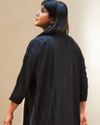
There is a magical quality about stone. Take a chisel and put a hammer to it and who knows what stories will emerge — stories that are cinematic, three-dimensional and teeming with a life of their own.
On first seeing Odisha’s Konark Sun Temple, Rabindranath Tagore said, “The language of stone surpasses the language of man.” He was right. Temple art and stone carvings are the story of Indian art. It is a language unbroken for 5,000 years and expressed best by unknown artists, sculptors and architects as both a civilisation’s textbook and manual of life, and a celebratory commentary on the human connection with God.
The Konark temple, known to sailors as the Black Pagoda, was conceived of as the giant chariot of the sun god. Twelve huge chariot wheels, each one intricately carved, seven horses in motion and a scientific orientation towards the sun make it a sundial. This 13th - century monolithic marvel is now a World Heritage Site.
But the Konark temple is merely one of the spectacular temples in India. There are 33,000 sculptures at the Madurai Meenakshi Amman Temple. The 16th-century temple dedicated to the goddess Parvati would make it to several record books if it so desired. One of its mahamandapams or great halls has 985 pillars, each one carved out of a single stone. This is one of the temples, legend has it, where Shiva arrives and performs as the Nataraja or the god of the dance of creation.
What compelled artists to dedicate their lives to working with stone, a hard medium that needs to be coaxed into yielding its secrets? What made them work with nothing but a hammer and chisel even on large rock faces? The Kailasa Temple at Ellora has been carved out of a single rock face and took 200 years to complete. It is hard to describe its scale, but it is a must-visit.
This story is from the August 2015 edition of Verve.
Start your 7-day Magzter GOLD free trial to access thousands of curated premium stories, and 8,500+ magazines and newspapers.
Already a subscriber ? Sign In
This story is from the August 2015 edition of Verve.
Start your 7-day Magzter GOLD free trial to access thousands of curated premium stories, and 8,500+ magazines and newspapers.
Already a subscriber? Sign In

Making Amends
This generation’s penchant for thoughtless consumption gets Madhu Jain roiled up, and she wonders if nature is getting its own back for our missteps…

Diamonds With Provenance
In keeping with the company’s commitment to environmental and social responsibility, Anisa Kamadoli Costa, chief sustainability officer at Tiffany & Co. and chairman and president at The Tiffany & Co. Foundation, enlightens Shirin Mehta on the efforts that make the jewellery giant an industry leader in transparency

SARTORIAL ECONOMICS
Sisters Tashi and Tara Mitra demonstrate to Akanksha Pandey how deviating from the mainstream can bend the way we think, live and dress

NOTES TO SELF
An anthropomorphized tiger’s perspective, a viscerally worded futuristic interpretation of loss, a critique of performative activism, a meta reflection on the earth’s crises. Told through different lenses, Janaki Lenin, Indrapramit Das, Keshava Guha and Roshan Ali’s stories — written exclusively for Verve — attempt to make sense of the fraught reality that we exist in today

The Eternal Optimist
As Generation X and xennials grapple with fully transitioning to conscious living, young millennials and Generation Z are leading the charge to reverse human-caused environmental damage. Sahar Mansoor, founder and CEO of the Bengaluru-based zero-waste social enterprise Bare Necessities, has a simple overarching philosophy: consume less and stay positive. Verve gets deeper into the mindset of the action-oriented earth advocate

Redemption SONGS
Indian music festivals have been demonstrating a refreshing sense of responsibility in terms of their ecological impact. Interacting with stakeholders who strive to make these large-scale events greener, Akhil Sood investigates the reasons behind the improved attitudes of audiences and the increase in corporate support.

earth hour
Crafted using nature’s elements, these dials draw inspiration from the many heterogeneous materials and hues around us.Verve turns its lens onto a mesmerising few

THE KIDS ARE ALL RIGHT
Children are holding adults accountable for both the grim future they are facing and the toll this is taking on their mental health. Madhumita Bhattacharyya initiates conversations with families of young climate activists and observes the extent to which parenting has changed in the face of catastrophe

NATURAL JUSTICE
Most of us are only just waking up to the urgency of climatic action. When the stakes are so high, what can individual action solve? Mridula Mary Paul, an environmental policy expert, is proof of the tenacity needed to effect systemic change. It’s not glamorous, and the rewards are few and far between, but that doesn’t stop her from aiming big, finds Anandita Bhalerao

Along For The Ride
Navigating Indian streets as a woman is hard enough. But what is it like while riding a bicycle? Bengaluru-based Shreya Dasgupta, a regular cyclist, speaks to five urban women about the pros and cons of this increasingly popular means of transport.